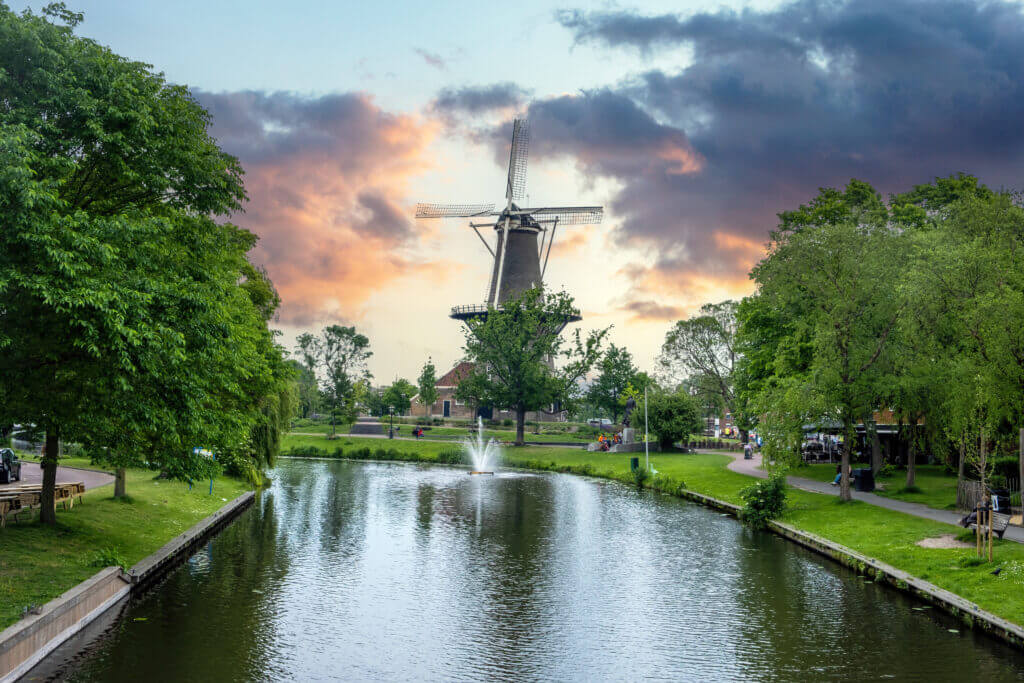Apart from Molen de Valk Leiden, there are numerous must-visit windmills in the Netherlands. Kinderdijk and Zaanse Schans windmills are examples.
What Is Molen De Valk Leiden?
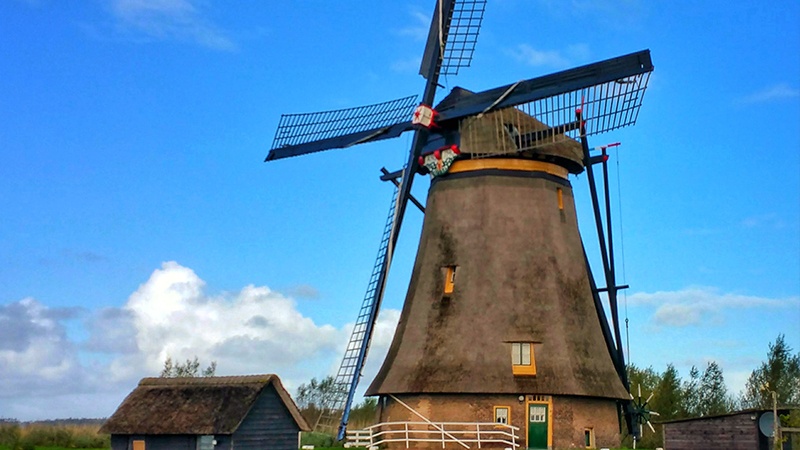
The construction of this windmill was in 1785. Its other name is “the Falcon”. Molen de Valk stands near the Leiden Central Station and is one of the city’s most iconic sites. You must have seen it on your way into the city.
In 1966, people transformed it into a municipal museum. You’ll find a collection of magnetic objects used in the milling procedure here. There are also books and tools from the earlier miller dating back to 1930.
History Of The Molen De Valk Leiden
Formation And Collapse
As we mentioned above, the 29-meter-high mill was built in 1785. It took only three months to complete the body part.
The mill was at its peak with a capacity of no less than four mills. However, the demise of Leiden and the introduction of motorized grinders posed a significant threat to these kinds of mills.
Finally, at the end of the 19th century, many mills had to shut down. Still, De Valk continued to produce flour well until the 20th century despite the fact that most of the work was not powered by wind power.
Millers Family
In 1869, Pieter van Rhijn purchased the mill. He is a descendant of a renowned miller family in South Holland. Living up to the family’s reputation, Pieter van Rhijn undoubtedly revived the Devalk’s business. Workers even had to ground grain at night in order to fulfill customers’ needs.
Molen De Valk – Observatory
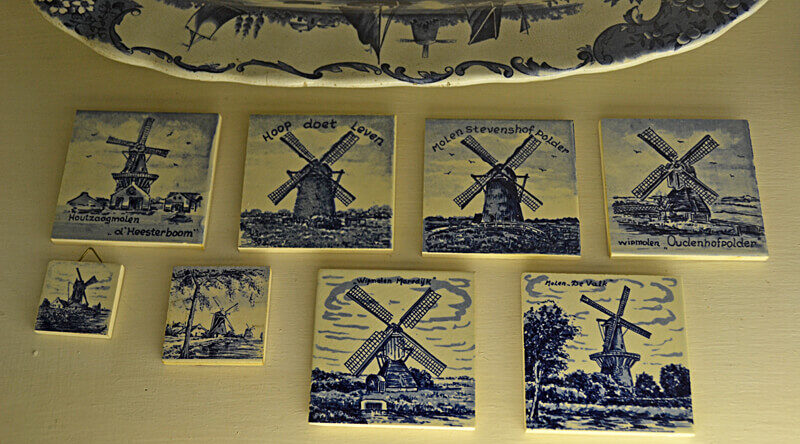
In 1940, the Dutch military used the Molen de Valk mill as an observatory. But the surrender happened only two days later.
During wartime, the mill was attacked from the air, leaving bullet holes in the walls and in the cap.
After Wartime
The war got the mill into an extremely deplorable state. Fortunately, the local council recognized its cultural-historical value and made an all-out restoration in 1947.
Molen De Valk – Municipal Museum
After the death of the last miller in 1966, Molen de Valk became a municipal museum.
People have collected tools here and put them into a collection. They are on display at the museum with detailed information on how to use them in the milling process.
Highlights Pieces In The Molen De Valk Leiden
As we mentioned above, this museum has unique objects from Dutch mill history. We’ll list them all out here so you don’t miss them on your visit.
The Miller’s House
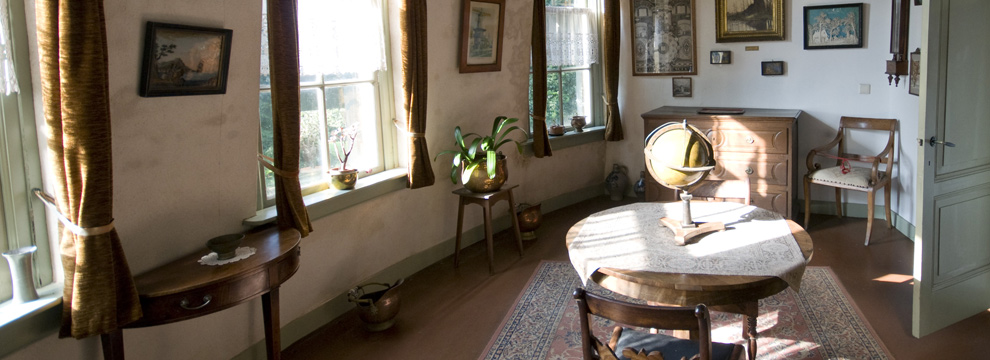
In fact, the mill’s original 1743 design was two different houses. In 1869, when the Miller family Van Rhijn took care of the mill, they redesigned the rooms to make one house. This was a brand-new format at that time. There were “a nice room”, a kitchen, and a lounge room. The house furnishings is still largely intact these days.
Newton Globe
This 1817 supposed-to-be “Newton Globe” is in miller’s house. The object is special due to its size, it’s smaller than normal.
Well-Kept Guild Coffin
This coffin is where the finances and other important pieces of the Rotterdam Miller’s Guild were secured. It has three keyholes for three separate keys. And there were three different people who kept the keys. As a result, only when these three members appeared that the box could be opened. It was quite an effective way of control.
Used Track Wheel
The track wheel delivers energy transmission from the kingpin to the axes of the grinding rocks. The specialty of this 1697 track wheel is it was beautifully cut out. Therefore, during the De Valk construction in 1743, people used it as a “secondhand” wheel.
The Damaged Upper Shaft
Outside the museum is a damaged, cast iron upper shaft. The shaft initially should have been used in the hood of a polder mill. But eventually, it slipped from the hoist and split in two.
Other Windmills In The Netherlands
Kinderdijk Windmills
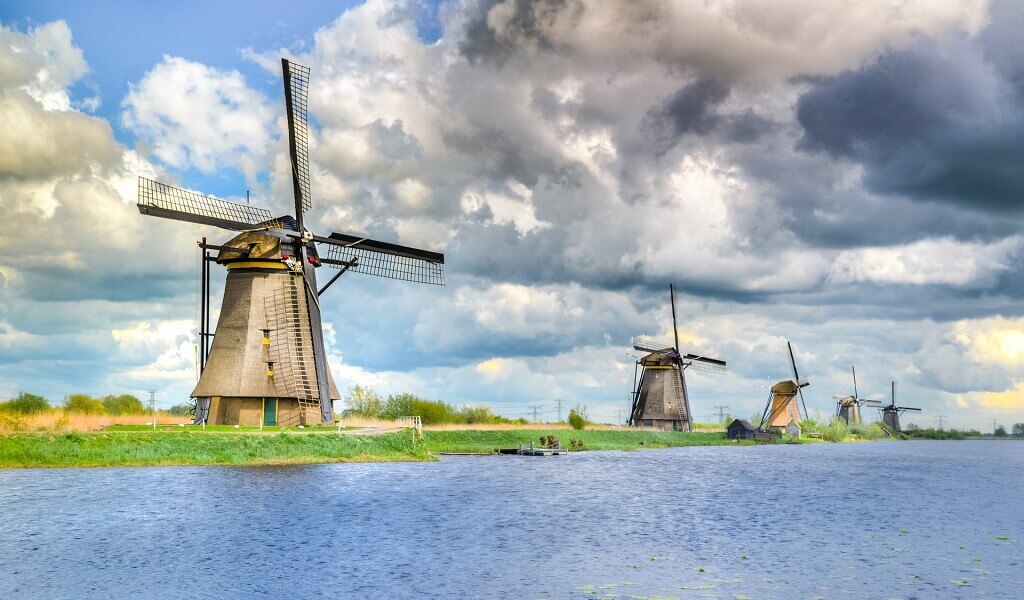
This 18th-century built windmill is in the Kinderdijk province in South Holland. It served as a water-management means to prevent flooding. In 1997, UNESCO recognized it as a World Heritage site.
Kinderdijk windmills are reachable by public transport, especially waterbus.
Zaanse Schans Windmills
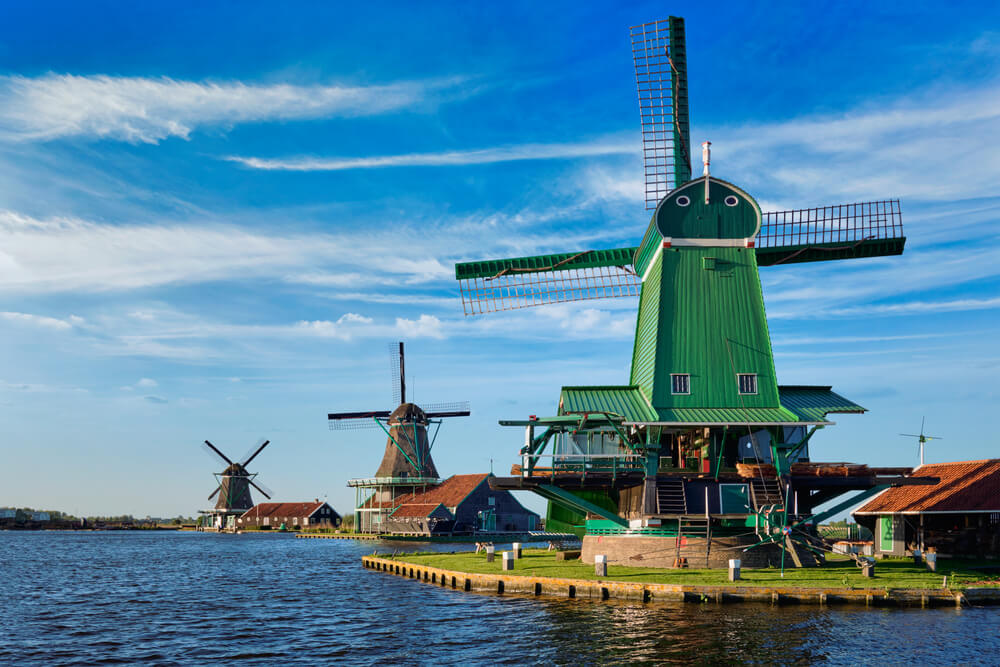
Zaanse Schans region was once home to over 600 windmills in the 17th century. However, there are only eight of them still stand.
Besides the windmills, Zaanse Schans has many museums and stores that follow the authentic Zaan style. Let’s step back in time and experience the feel-like 17th-century life.
Molen De Gooyer
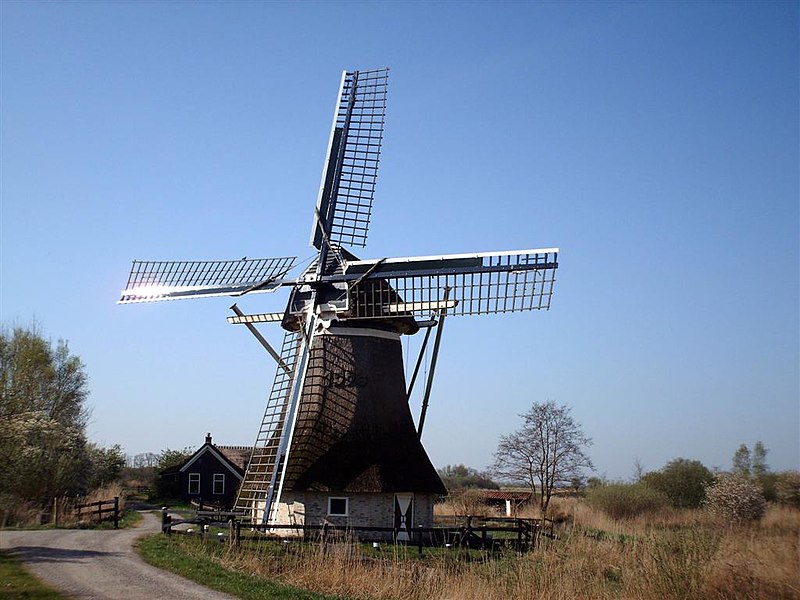
Sitting in the city center, this is one of the six original windmills left in Amsterdam. It’s also the tallest wooden windmill in the country.
At first, its purpose was to serve as a flour mill. Then, people transformed it into Brouwerij ‘t IJ, a popular brewery. The brewery ensures on making 100% organic beer. So, you should try it when coming here.
Schiedam Windmills
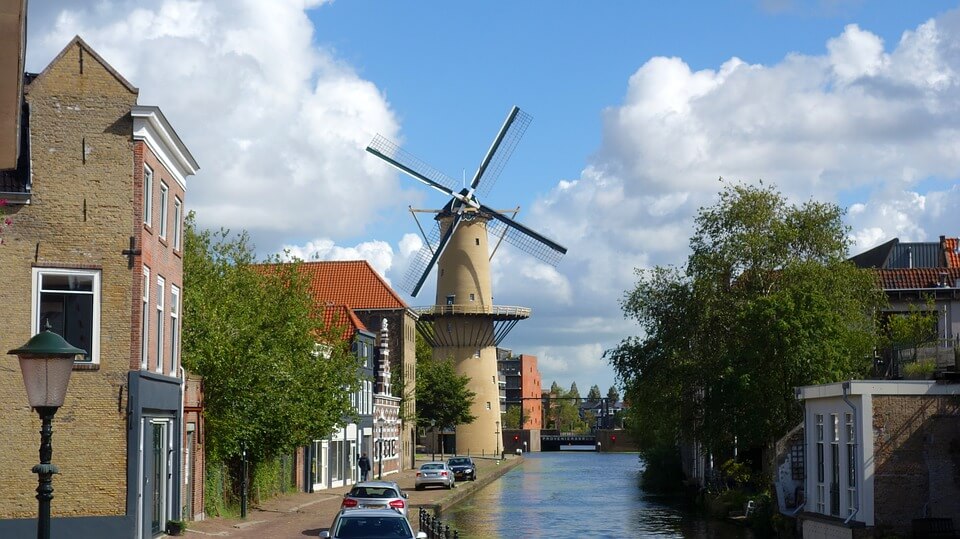
Schiedam is home to the largest windmills in the world. During the 18th and 19th centuries, the city was the world’s jenever capital. Due to the city’s windmills, the drink was effortless to make.
Five of the initial windmills still remain these days.
Related Posts You Can Read:
Why is Leiden always a great idea for your life in the Netherlands?
